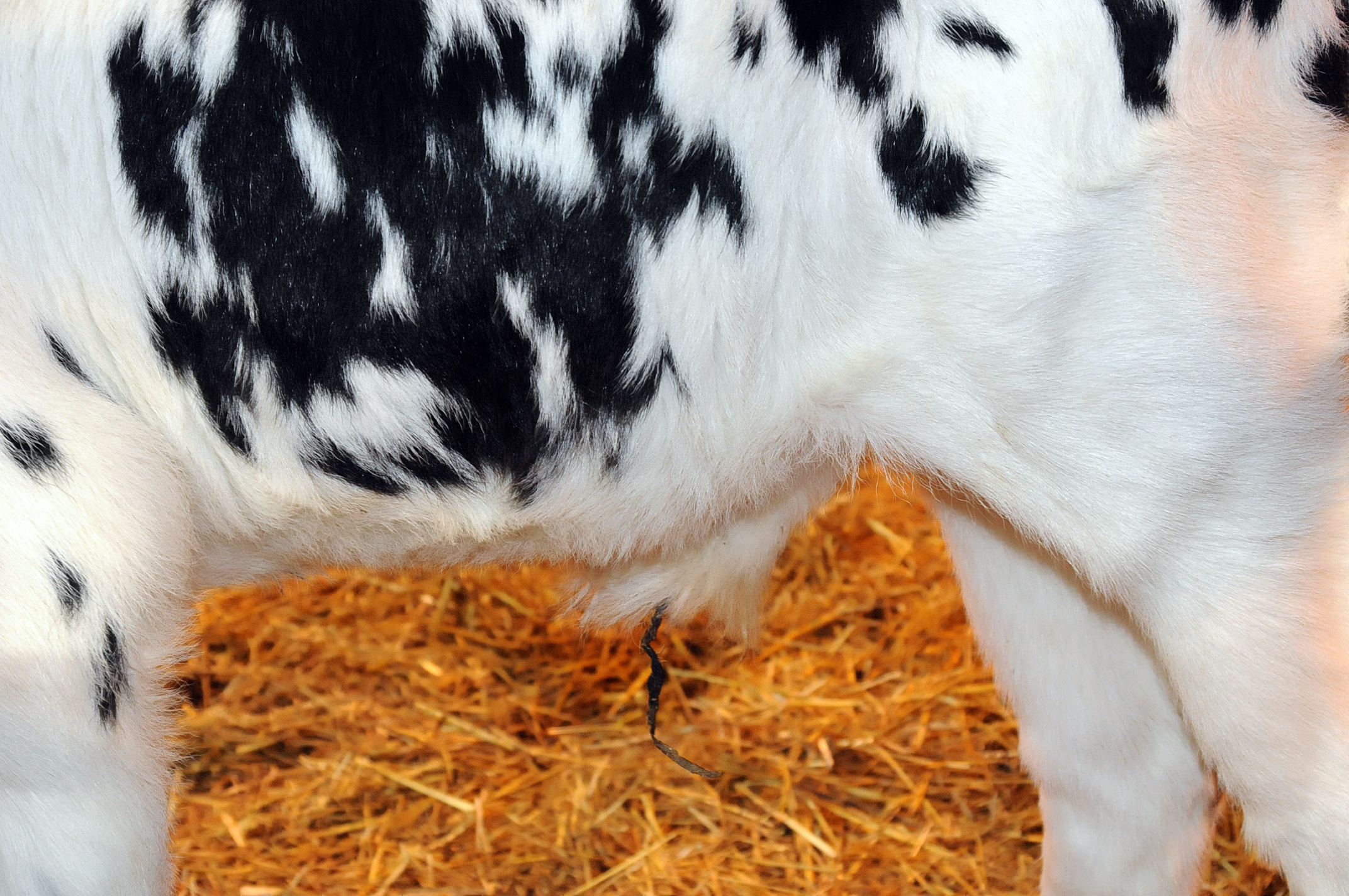Healthy Calf Conference
Follow to stay up-to-date on all Healthy Calf Conference updates. Speaker announcements, sponsorship information, registration announcements, and more.

In the summer of 2016, a study was performed to evaluate the number of bob calves that are shipped to Ontario livestock auctions while inflicted with navel infections. A “bob” calf is a young calf destined to be raised for meat1. In Ontario the majority of bob calves come from the dairy industry, typically the offspring of Holstein cows2. Bob calves are at a significant risk of developing navel infections because they are often sold at auction when they are only seven to 10 days old3. At such a young age calves have an underdeveloped immune system, which is worsened by the fact that many bull calves receive insufficient amounts of colostrum at birth3. The scientific name for a navel infection is omphalitis2. Omphalitis is a painful condition that affects the short and long term health and welfare of calves 2.
During gestation, the umbilical cord (which turns into the navel) acts as a direct delivery route for nutrients from the mother to the fetus4. After birth, the umbilicus continues to act as a direct path into the body which increases risk of infection as it provides easy access for environmental bacteria4. Once colonized within the navel, the bacterium most commonly travels via the umbilical vein into the liver5. After reaching the liver, the infection becomes systemic5 which can lead to severe lameness, neurological symptoms and eventual death6.
Unnoticed and untreated navel infections are thought to contribute to the high mortality and morbidity rates on veal farms7.
This summer’s study was conducted over a period of five weeks; all of the calves at three Ontario auctions were physically examined on the day of sale. In order to consistently score the status and severity of each navel, the navel of each bob calf was assessed by the same examiner using a four-point scoring system developed by Dr. Shelia McGuirk at the University of Wisconsin-Madison8. The scoring system is as follows:
In total 1337 calves were inspected throughout the study. Overall only 42.5 per cent of calves’ navels were considered to be completely normal. Unexpectedly, 51.6 per cent of the calves had slightly enlarged or swollen navels. Though these navels were not considered infected, swelling may be an early indicator of potential infection. A total of 5.75 per cent of the calves had confirmed navel infections, according to secondary veterinary inspection.
There are many factors that may predispose a calf to the development of a navel infection3. These factors include but are not limited to: inadequate colostrum intake and unfavourable environmental conditions such as excessive moisture and manure in the calf pens3. Other major contributors are poor navel hygiene practices including insufficient navel dipping routine or allowing the umbilical remnant to be sucked on by other calves3.
Navel infections can be initially prevented, and easily diagnosed with routine checks by producers on the farm1. The National Farm Animal Care Council’s Code of Practice for the Care and Handling of Dairy Cattle recommends that calf navels should be dipped in a disinfectant (such as a strong iodine solution) immediately following birth9. Furthermore, the navel should be re-dipped each day until the umbilical cord is dry 9. Finally, the umbilical cord should be completely dried before the calf is shipped to auction in order to reduce the potential for obtaining a bacterial infection throughout the sale process3.
Calves with a navel infection do not always have a fever or show signs of distress10. Regardless, they should be treated with an antibiotic as soon as navel swelling is present in order to prevent systemic infection3. A combination of antibiotics is often required for these calves, as multiple types of bacteria are usually involved10. Always talk to your herd veterinarian for the best practice to use on your farm.
Overall, navel infections are potentially a key contributing factor to the high morbidity and mortality rates on farms rearing bob calves in Ontario7. Navels should be checked on a regular basis to reduce infection and the potential for infection in calves4. “I think it is without saying that navel infections are also very important in heifers and are often underdiagnosed,” says Dr. Dave Renaud, University of Guelph. In addition, future in-depth studies will be conducted to determine a more accurate representation of the prevalence and severity of navel infections at Ontario livestock auctions throughout the year.
Acknowledgements:
This project was funded and commissioned by the Animal Health and Welfare Branch at OMAFRA. A special thanks to the owners and operators of the participating auctions, as well as the appointed veterinary inspectors who aided in data collection.
References
Follow to stay up-to-date on all Healthy Calf Conference updates. Speaker announcements, sponsorship information, registration announcements, and more.
The Codes of Practice are nationally developed guidelines for the care and handling of farm animals. They serve as our national understanding of animal care requirements and recommended practices.